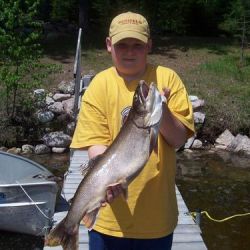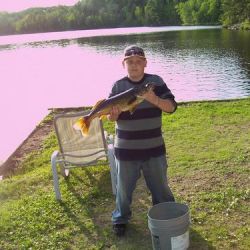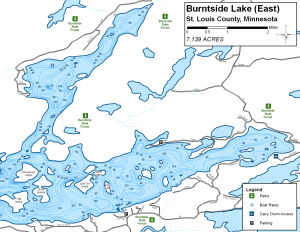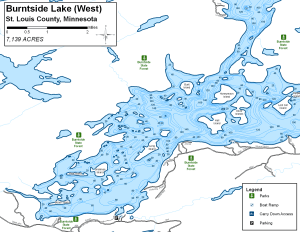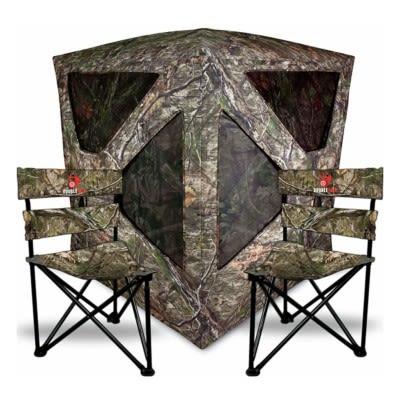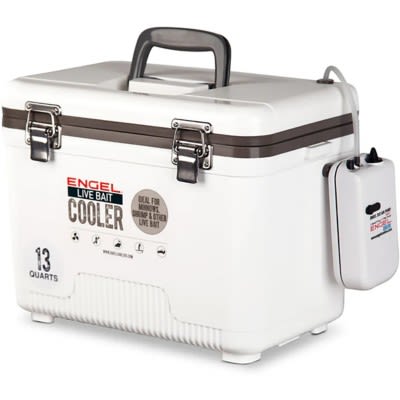Today's Best Fishing Times
Get the best fishing times for Burntside Lake with Lake-Link's Fishing Forecast. SEE MORE
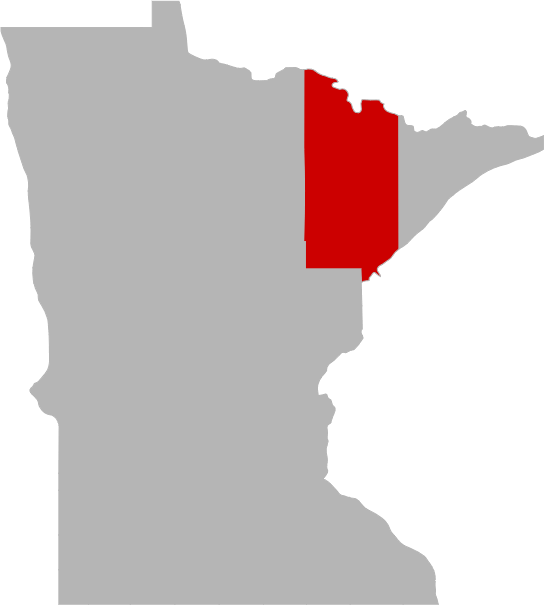
The lake has a maximum depth of 126 feet and an average depth of 39 feet. It is surrounded by forests and rolling hills, which provide a picturesque backdrop for water-based activities such as boating, fishing, and swimming. The lake is home to a variety of fish species, including lake trout, walleye, northern pike, bass, and panfish, which are popular targets for anglers.
Burntside Lake is also an important ecological resource, providing habitat for a variety of plant and animal species. The lake is part of the Superior National Forest and is managed by the Minnesota Department of Natural Resources to protect and conserve the area's natural resources.
In addition to its natural beauty and recreational opportunities, Burntside Lake is surrounded by several parks, campgrounds, and resorts, making it a popular vacation destination. The area also offers hiking and biking trails, hunting opportunities, and other outdoor activities for visitors to enjoy.

Explore Lake Vermilion
Share your catch!
We want to see what you've caught on Burntside Lake.Frequently Asked Questions About Burntside Lake, MN
- How big is Burntside Lake?
- How deep is Burntside Lake?
- What kind of fish can you catch in Burntside Lake?
- Are there fishing guides or charters for Burntside Lake?
- Are there places to stay in the Burntside Lake area?
- Are there topographical lake maps available Burntside Lake?
- Are there boat launches on Burntside Lake?
- Are there places to eat and drink near Burntside Lake?
- What is the average air temp for Burntside Lake?
- Are there any state parks near Burntside Lake?
How big is Burntside Lake?
How deep is Burntside Lake?
What kind of fish can you catch in Burntside Lake?
Other fish species in the lake include Cisco (Tullibee), Golden Shiner, Green Sunfish, Hybrid Sunfish, Lake Whitefish, Rainbow Smelt, Shorthead Redhorse, Slimy Sculpin and White Sucker.
Are there fishing guides or charters for Burntside Lake?
Are there places to stay in the Burntside Lake area?
More Lodging Options
Are there topographical lake maps available Burntside Lake?
Are there boat launches on Burntside Lake?
Are there places to eat and drink near Burntside Lake?
Explore the Burntside Lake area in a RV
Are you looking for an adventurous vacation option that won't break the bank? Look no further than renting an RV! Contrary to popular belief, the process is much simpler than you might imagine. With just a few easy steps, you'll soon be experiencing the ultimate freedom and convenience of exploring the open road in your very own recreational vehicle. And the best part? RV travel can save you up to 60% compared to other types of vacations! With the money you'll save, you'll be able to travel even more and create unforgettable memories along the way. So why wait? Start planning your next adventure today with an RV rental. Learn more about renting a RV.
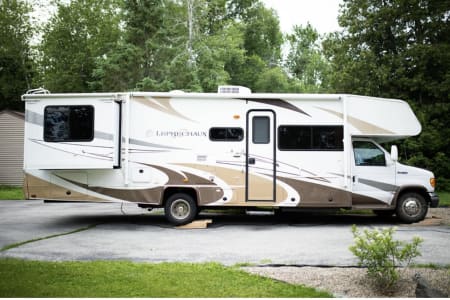
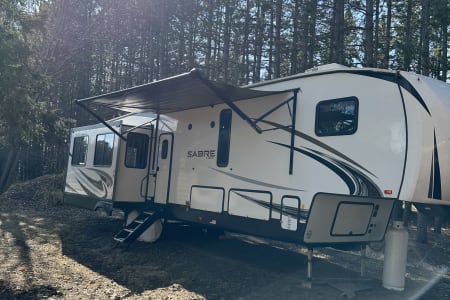
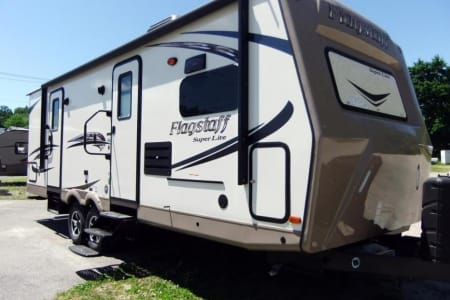
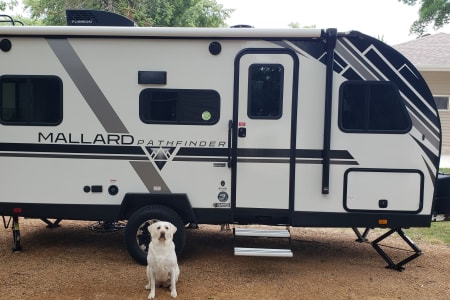
Adventure Awaits in the 2021 Heartland Mallard Pathfinder P16SRD
Hermantown, MN
What aquatic invasive species are found in Burntside Lake?
Join us in the fight to prevent the spread of invasive species These sneaky creatures can hitch a ride on boats, clinging onto propellers, anchor lines, and trailers. They can even survive in hidden places like bilge water and ballast tanks, or disguise themselves in dirt and sand that sticks to nets, buckets, anchors, and waders. But don't worry, we have the power to stop them in their tracks with just a few simple steps. So let's do our part and protect our waters from these unwanted invaders.
History & Status of the Fishery
Burntside Lake is located northwest of Ely and has five public motor boat accesses as well as a number of portage and water route connections to other nearby lakes. It is a 7,314 acre lake with a maximum depth of 126 feet and clear water. There are several relatively minor inlets, located mostly on the north side of the lake. The Shagawa River is the only outlet which flows out of the southwest corner of the lake where it then turns and heads east to Shagawa Lake. Burntside Lake is a two-story fishery with deep, cold, well oxygenated water capable of supporting a cold water fishery (fish such as lake trout, lake whitefish, cisco and burbot) and a shallow, warmer, but still well oxygenated area capable of supporting a cool and warm water fishery (fish such as walleye, northern pike, bass and panfish). Unfortunately, rainbow smelt and spiny water flea, both non-native invasive species are also present in Burntside Lake. Rainbow smelt were first discovered in the lake in 1970. Their presence is likely a result of an unintended bait release or the consequence of smelt netters cleaning their catch from Lake Superior on their docks and unintentionally introducing fertilized eggs to the lake. Spiny water flea are a zooplankton that were first discovered in Burntside Lake in 2010. Their presence is likely a result of infested boats or fishing equipment being used on Burntside. There is an increased risk of spread with this small invasive as they can attach to fishing lines, downriggers, anchor ropes and fishing nets, as well as be transported in bait buckets, bilges and livewells of boats if they are not completely dried out. Burntside is one of the most popular lakes in the Tower area providing for a number of recreational pursuits. It is a prototypical northern Minnesota/Canadian shield waterbody with shorelines covered in tall pines, areas of tall granite ledge rock, many islands, exceptionally clear water and much of the shoreline undeveloped. Areas along the south shore, east end and parts of the north arm are accessible by road. Some of these areas are moderately developed with homes and cabins. Most of the undeveloped public land is owned by the US Forest Service. Several lakeshore campsites are located on the north arm and west end. In the spring of 2015 the Forest Service conducted prescribed burns along the north shore of much of the west end and part of the southwest side of the north arm. Some of the islands on the west end were also burned. Lake bottom substrates along the shoreline are mostly boulder and ledgerock. Some bays have soft bottoms with a fair amount of aquatic vegetation. Additionally, a few bays are quite sandy and make for great swimming areas. Burntside has a long history of stocking dating back to 1912. Since 1965, walleye and lake trout were the only species that were stocked. Lake trout were stocked from the 1990's to 2010. Walleye fingerlings are still currently being stocked in even years at around 25,000 fish per stocking. This survey used four different net types: deep water gill nets, shallow water gill nets, small mesh gill nets and trap nets. Fish species sampled included black crappie, bluegill, burbot, golden shiner, green sunfish, hybrid sunfish, lake trout, lake whitefish, northern pike, rainbow smelt, rock bass, sculpin, shorthead redhorse, smallmouth bass, walleye, white sucker and yellow perch. The deep water gillnet catch for lake trout was just over one fish per net, down slightly from other assessments on Burntside Lake, and just below average when compared to other area trout lakes. Fish from 9 to 27 inches were sampled with an average length of 15 inches. The largest fish sampled and the average length are on par with previous surveys. The average weight was nearly two pounds. In 2010, lake trout stocking was discontinued, but all lake trout stocked prior to this had been fin-clipped for later age identification. Of the 22 lake trout captured in the 2015 assessment, only one fish was fin clipped. This indicated over 95% of the fish captured were naturally reproduced. Lake trout ranged in age from 2 to 12 years. Fish over 17 inches long or older than 6 years generally were sexually mature. Growth for young fish on Burntside was slightly slower but older fish was slightly faster compared to other trout populations in the Tower area. Lake whitefish in Burntside first started showing declines starting in 1982 and the 2015 catch rate was the lowest on record. Only six lake whitefish were caught in all the nets combined. Sizes ranged from 23 to 27 inches with an average of 25 inches. Ages of all six fish ranged from 24 to 54 years old, indicating that there has been little to no natural reproduction for the last 25 years. The average weight was just over 6 pounds and the largest whitefish weighed in at nearly 9.5 pounds. Cisco (tullibee) are noticeable by their absence from surveys since 1999. An average of 4 fish/deep gill net were captured from 1950 through 1986. Cisco numbers then gradually declined until 1997 when the last cisco was sampled. Declines of cisco and lake whitefish were likely due to the smelt introduction. The deep water gillnet catch for burbot was nearly a half a fish per net which was slightly better than average for Burntside Lake. Sizes were 20 to 24 inches with and average length of 22 inches. Although lake whitefish are on the decline and cisco seem to have disappeared completely, the burbot catch has remained relatively unchanged through time. Sixty-five walleye were sampled in the shallow water gill nets for a catch rate of just over five fish per net which is better than the historic average for Burntside Lake. Lengths ranged from 7 to 29 inches with an average of 16 inches which was slightly better than the average. The average weight was two pounds. Walleye growth in Burntside Lake is exceptional, likely due to the presence of smelt as a forage. Fish from 1 to 20 years old were sampled with all but the two oldest fish coming from a stocked year class. Ten year classes were identified with 2012, a stocked year, representing just over 50% of the catch. The northern pike shallow water gillnet catch was just over two fish per net which is better than average for Burntside Lake. Lengths ranged from 12 to 38 inches with an average of 25 inches. Both the average and maximum lengths were on par with previous surveys. The average weight was over four pounds. Twelve smallmouth bass were sampled in shallow water gill nets. Lengths ranged from 6 to 19 inches with an average of 11 inches. Thirty-three smallmouth were also sampled in trap nets for a catch rate of just over two fish per net which is the highest on record for the lake and quite high when compared to other similar lakes. The trapnetted fish tended to be a little smaller than fish from the gill nets. Growth was slow compared to other smallmouth bass populations in the area. Ages ranged from 3 to 10 years. The bluegill trapnet catch in 2015 was over 11 fish/net which is much higher than the two previous surveys that used trap nets. Sizes were relatively small though ranging from 3 to 8 inches with an average of 5 inches. The yellow perch shallow gillnet catch was just under one fish per net which is average for the lake. The lengths ranged from 8 to 10 inches. These sizes are comparable to previous surveys. High catches of rock bass were sampled in both shallow gill nets and trap nets. The shallow gill net catch rate was the highest catch rate on record for the lake. Combining the catches of both nets, lengths ranged from 4 to 9 inches with an average of 6 inches. Other species sampled in nets but in low numbers were black crappie, green sunfish, hybrid sunfish (pumpkinseed and northern sunfish cross), shorthead redhorse, sculpin, golden shiner and white sucker. Rainbow smelt are a non-native invasive fish that were first documented in Burntside Lake in 1970. Regular small-mesh gillnetting began in 1987. Previous surveys of smelt catches were highly variable but more recent assessments are showing lower numbers. The 2015 assessment shows the lowest catch rate to date. Sizes have remained relatively constant through time though. It is likely that the unintentional introduction of smelt has resulted in the nearly total failure of natural reproduction of walleye, lake whitefish, and cisco in Burntside Lake. Lake trout natural reproduction was also poor and has only recently showed signs of rebounding. These are all species that do not nest or otherwise protect their eggs or young following spawning. Smelt have been shown to have effects on these other species both by preying on eggs or young fish and by competing with these species for food. Spiny water flea (Bythotrephes longimanus) are a non-native invasive zooplankton that were first discovered in Burntside Lake in 2010. They are known to consume other native zooplankton which are often an important food source for native fish. Evidence from other lakes has shown a decline or elimination of some species of native zooplankton after spiny's were introduced. There is an increased risk of spread with this small invasive as they can attach to fishing lines, downriggers, anchor ropes, and fishing nets, as well as be transported in bait buckets, bilges and livewells of boats if they are not completely dried out. Although they were only recently introduced to Burntside Lake, their impacts have yet to be determined. During the 2015 winter trout season a creel survey was conducted on Burntside Lake. The purpose was to obtain estimates of current angling pressure, catch, harvest and release rates, as well as gather information on the population of stocked versus naturally reproduced lake trout. Results from the creel were summarized into the Burntside Lake 2015 Winter Creel Survey Completion Report. Survey results were not available at the time of this report.
What is the average air temp for Burntside Lake?
Are there any state parks near Burntside Lake?
For more Minnesota State Park information see our State Park Guide.
Burntside Lake Reviews
Below is the word on street about Burntside Lake.Have you been to Burntside Lake? Why not share your personal reveiw with others?
Submit Review
marty h.

More Nearby Lakes To Explore
There's more lake's to explore around Burntside Lake...| DISTANCE | ACRES | MAX DEPTH | |
| Chant Lake | 0.5 mi | 16 | 37 ft |
| Shipman Bass Lake | 1.3 mi | 37 | 34 ft |
| West Twin Lake | 2.0 mi | 80 | 22 ft |
| Minister Lake | 2.7 mi | 56 | 16 ft |
| East Twin Lake | 2.7 mi | 123 | 22 ft |
| Hanson Lake | 2.8 mi | 19 | 65 ft |
| Ole Lake | 3.3 mi | 56 | 19 ft |
| Maxine Lake | 3.5 mi | 39 | 21 ft |
| Everett Lake | 3.7 mi | 113 | 15 ft |
| Coo Lake | 3.7 mi | 19 | 25 ft |


 (1)
(1)